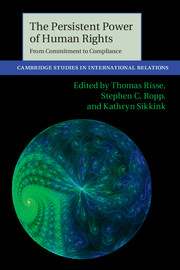Preface
Published online by Cambridge University Press: 05 March 2013
Summary
In 1999, the three of us co-edited The Power of Human Rights: International Norms and Domestic Change (PoHR; Cambridge University Press). In that volume, we proposed a spiral model of human rights change based on the “boomerang effect” which one of us had developed earlier with Margaret Keck (Keck and Sikkink 1998). Ten years later in 2009, we decided that it was time for some additional stock-taking. How had our original spiral model held up after a decade of much more intensive research on the issue of actual compliance with human rights norms? What new developments had there been in the human rights area and what did they say about the strengths and weaknesses of our initial work?
With questions such as these in mind, the three of us decided to reconvene parts of the old PoHR research team and to invite some other eminent scholars from Germany and the United States who were also doing important work on human rights. As was the case with our original volume, we kicked things off with a workshop held in Laramie at the University of Wyoming (August 27–29, 2009). During a coffee break there, we decided that we should get back into business and start working on a new book on human rights change. The result was a second workshop that took place in Berlin at the Freie Universität Berlin (June 3–5, 2010).
- Type
- Chapter
- Information
- The Persistent Power of Human RightsFrom Commitment to Compliance, pp. xiii - xivPublisher: Cambridge University PressPrint publication year: 2013

